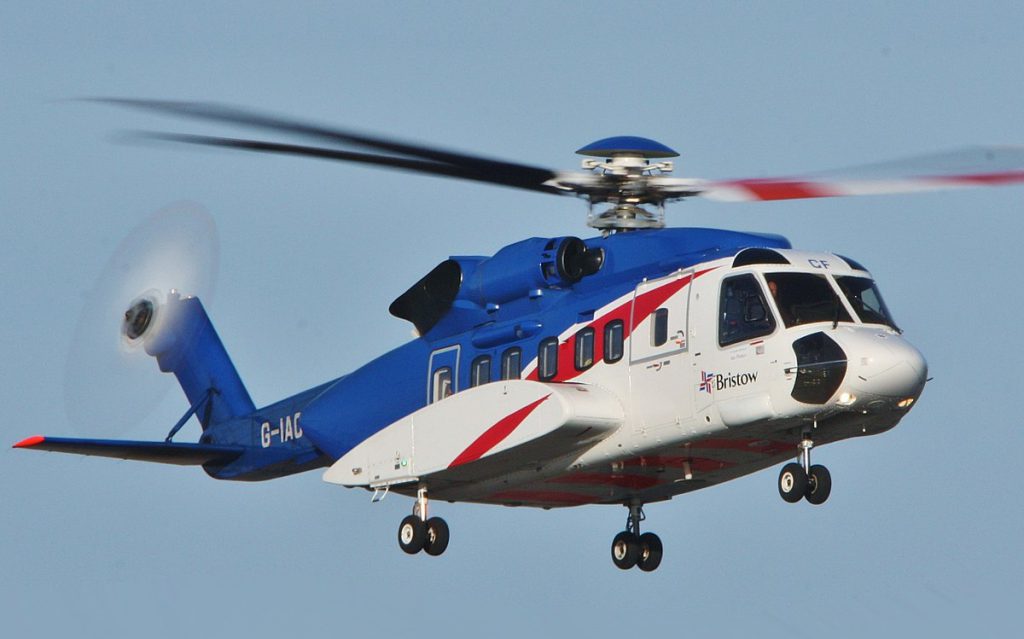S-92 will be leading North Sea copter ‘for decades’

Written by Allister Thomas
Helicopter manufacturer Sikorsky has claimed its S-92 will remain the leading helicopter in the North Sea “for decades to come”.
The claim – from vice president of business development and strategy Nathalie Previte – may be a fair one. The aircraft is widely favoured by passengers and pilots alike and has a strong track record on reliability.
Its dominance in the North Sea is reflected in the fact the region has accounted for nearly half of all S-92 flight hours this year, despite the helicopter operating in 25 countries around the world.
The aircraft also has a 95% availability rating and has won a raft of awards proving its safety merits.
However, some concern has been raised that, despite the S-92’s immaculate record, it could be too dominant in the North Sea, with a union last month claiming any grounding would cripple the sector.
The claims came from Industri Energi (IE), a Norwegian union, however Ms Previte was quick to dismiss them.
She said: “It’s interesting that someone would say there’s no competition when there’s obviously an oversupply in the oil and gas market.
“Grounding is not a high risk, it is a very, very low probability if at all.
“We are very confident and proud of the S-92’s reliability. There was a time when the oil and gas industry was concerned when another aircraft was removed from flying offshore. We have had a lot of people from the North Sea and the unions come and visit us to talk about safety offshore and ensuring the safety of the aircraft.
“We have seen a trend of increased flight hours. Our availability metric is close to 95%, that speaks volumes about the performance and reliability of the aircraft.
“There are many industries that have selected just one product and they don’t talk about ‘what if’, they talk about what has been tested and proven. The S-92 is in that category that is proven.
“We do have a loyal customer base and that’s because the missions are performed at all times. Our availability is unmatched.”
The IE union said, on the Norwegian side, “all the eggs were in one basket” with the S-92.
That is not necessarily the case in the UK, with some operators using other helicopters like the H175 and AW189, however the S-92 is the dominant force in the region.
Part of the North Sea’s reliance on the S-92 has come from the grounding of Super Puma helicopters following a fatal crash in Norway in 2016.
Thirteen people were killed in the incident off the island of Turoy, including Iain Stuart from Laurencekirk in Aberdeenshire.
Despite a worldwide grounding of Super Pumas since being lifted, the aircraft has not returned to service in the North Sea, with trade unions staunchly opposed to them ever being used again.
In light of this, it is perhaps unsurprising the S-92 has become the helicopter of choice. However, despite its strong track record, the aircraft has not been without its own issues.
The S-92 made headlines for the wrong reasons in 2016 when a helicopter spun on the West Franklin platform in the North Sea.
The incident saw the S-92 spin more than 180 degrees on the platform deck but no one was hurt.
The Air Accidents Investigation Branch later found that had the fault happened any earlier the helicopter could have crashed into the sea.
Investigators later found there was a bearing failure in the tail rotor that engineers had not identified.
Sikorsky has taken a number of steps to improve safety since then, including the introduction of its real-time Health and Usage Monitoring Systems (HUMS) to track the health of the aircraft.
The HUMS system is connected to S-92s around the world including the North Sea, which Sikorsky said allows it to predict events by analysing data from across the fleet in real time.
The data is assessed by Sikorsky engineers at a 24-hour customer service centre.
Ms Previte added: “Today with adding a HUMS sensor and through the various efforts that we released to our operators, we are confident that the S-92 pitch change shaft bearing situation is mitigated.
“Over the last three years we have invested tens of millions of dollars in data analytics. Our system reviews the data of our entire fleet and safety has improved so much.
“When that (tail spin) happened we communicated with all our customers to make sure that they were monitoring components in the right way. We are very, very confident in the S-92.”
Sikorsky’s S-92 fleet has carried out thousands of flight hours this year already, with almost 16,000 in March.
Of that, the energy sector accounted for nearly 14,000 hours and the Sikorsky is projecting this year will beat the 170,000 overall hours flown in 2017.
Ms Previte believes the S-92 will maintain its dominance in the North Sea, but will not sit idly.
She adds that the original S-92 is not the same model as today, and further developments are on the way for as technology progresses.
She said: “The S-92 is the industry leading standard and will remain for many decades to come. I would also say that the S-92 today is not the same one that was launched in 2004. We are always looking at product enhancement.
“We have technology developing in theatres of innovation that can be inserted into the S-92 and will ensure value to our customers and the people travelling in the helicopter.”